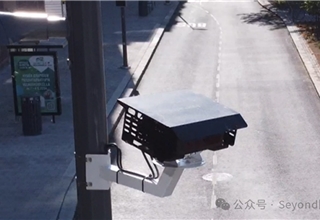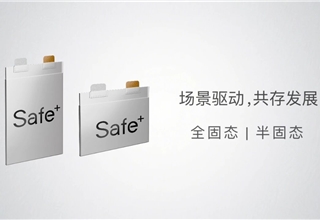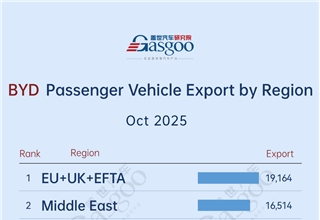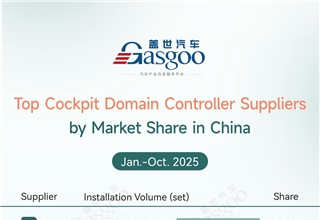Hello everyone, welcome to Gasgoo. In this episode of "Wheels of Change: Stories of Chinese Auto Giants", we will delve into the story of the understated JAC Group.
A rich history
Among Chinese OEMs, Anhui Jianghuai Automobile Group (JAC Group) stands out as a unique entity. Although it maintains a very low profile, it was the pioneer that ushered in the development of Anhui Province's automotive industry.
In 2024, JAC Group celebrates its 60th year in the automotive sector.
Over these 60 years, JAC has witnessed the transformation of Anhui's automotive industry from nonexistence to prominence. It has grown from a small, local state-owned enterprise to a significant player in Anhui's automotive industry. Throughout this journey, JAC Group has experienced the glory of the commercial vehicle market and the challenges of continuous transformation under a dual approach of focusing on both commercial and passenger vehicles, as well as both traditional and electric powertrains.
JAC Group's predecessor was Chaohu Auto Parts Factory, the first automotive enterprise in Anhui Province, officially established in May 1964. That same year, Chaohu Auto Parts Factory merged with Anhui Internal Combustion Engine Repair Plant, and the headquarters moved to Hefei, the provincial capital of Anhui.
JAC Group's automaking journey began with commercial vehicles. In April 1968, the first generation of JAC entrepreneurs built Anhui's first 2.5-ton truck, filling a gap in the province's automotive manufacturing industry. In 1969, the first batch of 20 trucks rolled off the production line, later named JAC. The renaming of Chaohu Auto Parts Factory to Jianghuai Automobile Manufacturing Plant was proposed and officially took place in 1977, changing the name to Hefei Jianghuai Automobile Manufacturing Plant.
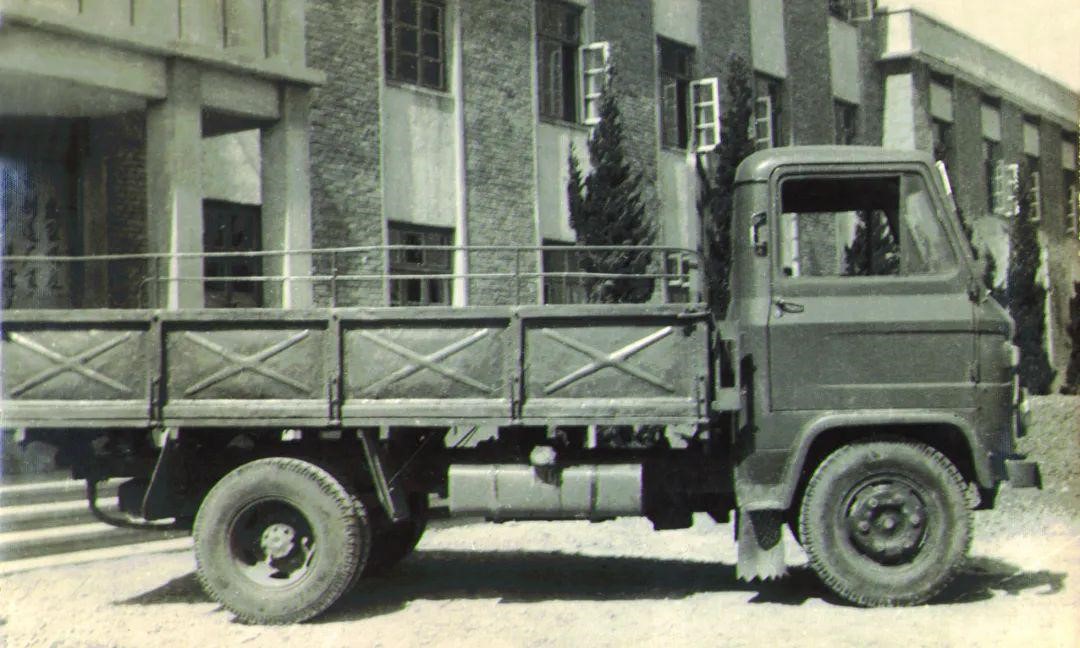
The first 2.5-ton truck; photo credit: JAC Group
In 1970, JAC Group produced the HF140, a 3-ton truck model, achieving sales of over a thousand units in that year alone. This model became the prototype for the first generation of JAC’s light-duty trucks. In 1985, Jianghuai Automobile Manufacturing Plant began mass production of the first generation of light-duty trucks—the JAC HF144A, a 2.5-ton dual-cab truck, marking the beginning of JAC Group's strong presence in China’s light-duty truck market.
In the 1990s, JAC Group underwent a significant business transformation, moving from the cargo truck sector into the bus chassis arena. In 1990, China's first purpose-built bus chassis was developed at Jianghuai Automobile Manufacturing Plant, ending the reliance on modified truck chassis. That same year, JAC Group ventured into overseas markets. In May 1990, 36 JAC light-duty trucks and 24 JAC bus chassis were exported to Bolivia, marking the beginning of JAC Group's global market expansion. The group also acquired Kazakhstan's largest automotive industrial group, Allur Group. To date, JAC Group has exported over 800,000 vehicles to more than 130 countries and regions worldwide, with over a thousand sales and service outlets. JAC Group's export volume of mid-to-high-end light-duty trucks has consistently ranked first in the industry for many years.
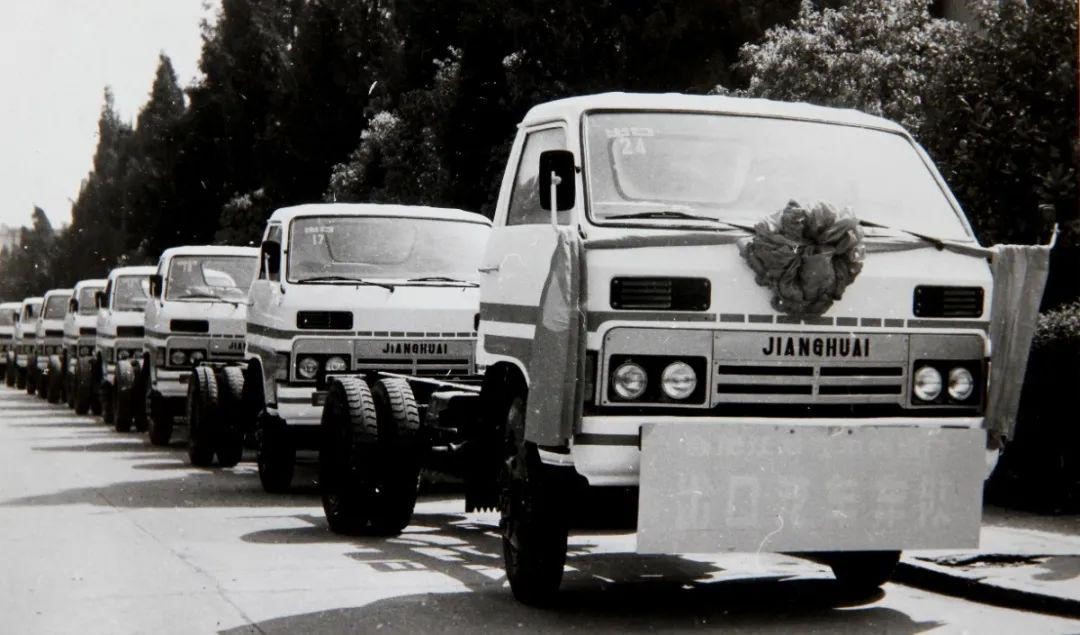
JAC light-duty trucks heading to Bolivia; photo credit: JAC Group
In 1997, Jianghuai Automobile Manufacturing Plant acquired Hefei Bus Factory and, together with Jianghuai Tube Manufacturing Plant, established Hefei Bus Manufacturing Co., Ltd. Simultaneously, with the ongoing expansion of its commercial vehicle business, JAC officially entered the stage of group operation. In May 1997, Anhui Jianghuai Automobile Group Co., Ltd. was officially established.
Entering the new millennium, JAC Group achieved significant breakthroughs in both the capital market and the passenger vehicle market. In 2001, Anhui Jianghuai Automobile Chassis Co., Ltd. was listed on the Shanghai Stock Exchange, becoming the only chassis company in China to be listed there. The following year, it was renamed Anhui Jianghuai Automobile Co., Ltd.
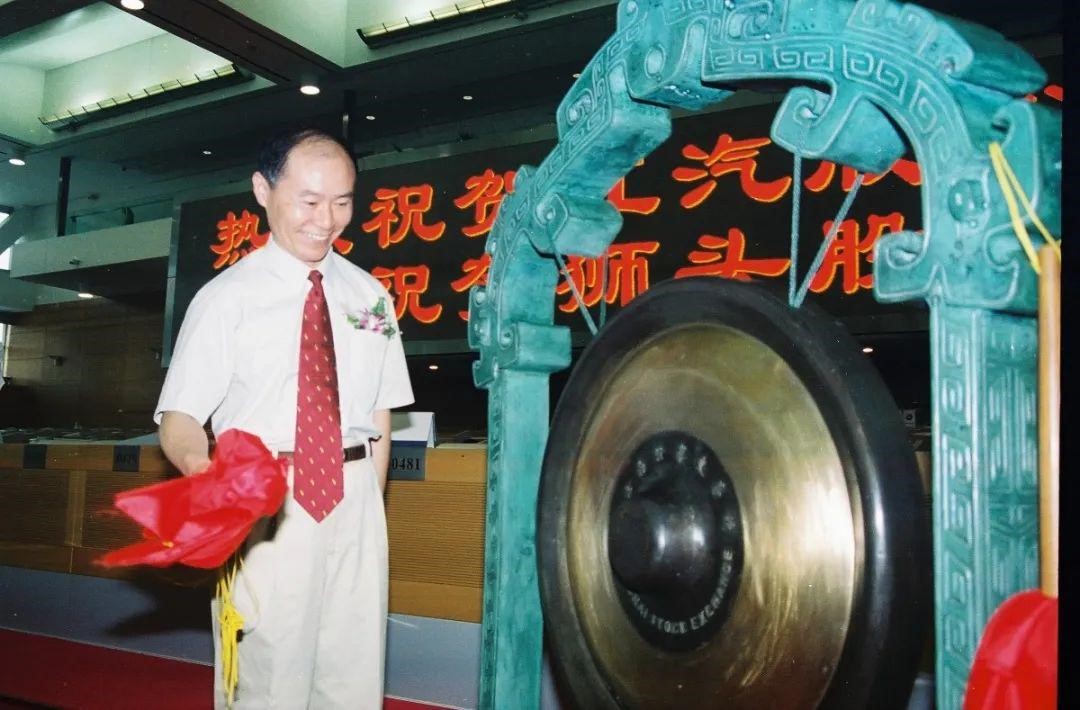
Photo credit: JAC Group
In March 2002, the RF MPV rolled off the production line, seen as an important attempt before JAC Group's official entry into the passenger vehicle market, laying the foundation for its full-scale foray into this field. In January 2008, JAC Group began mass production of its first sedan product, the Binyue, followed by the launch of the Heyue series a year later, officially starting JAC Group's journey of developing both commercial and passenger vehicles simultaneously.
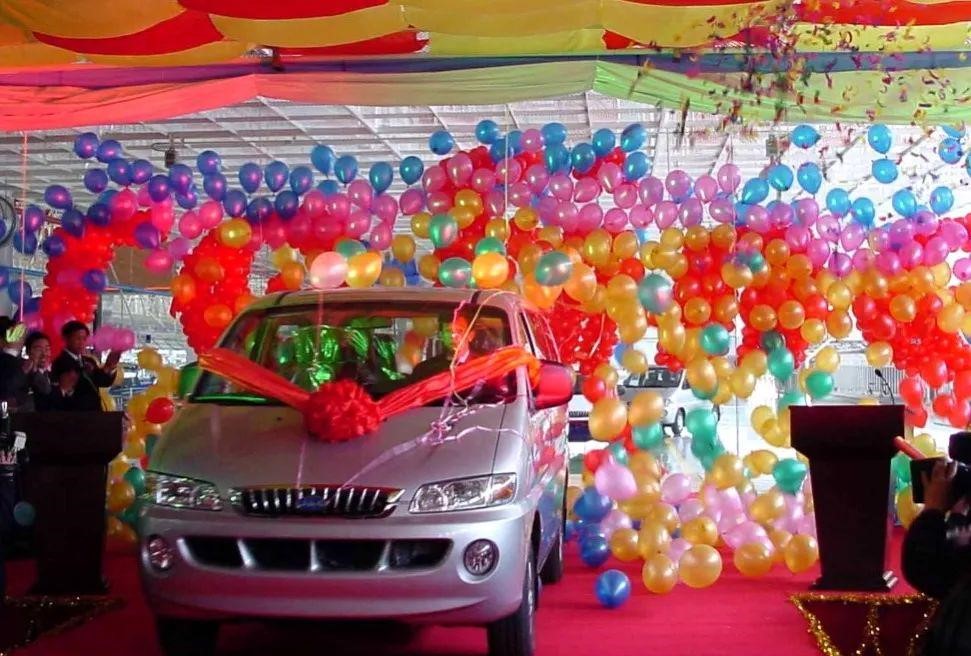
RF MPV rolling off line; photo credit: JAC Group
Triumphs and challenges in developing both commercial and passenger vehicles
In the commercial vehicle market, JAC Group's past can be described as illustrious.
In 1995, JAC Group became the annual sales champion in China’s bus chassis segment. In 1996, JAC Group continued its success in the bus chassis field, with annual sales surpassing 10,000 units, which was a remarkable achievement in the domestic market at that time. In 1998, JAC Group produced the first China-made bus chassis with independent suspension, targeting high-end official and business vehicles, shattering the monopoly of foreign products in this segment. In 2003, JAC Group acquired a 28.12% stake in Ankai Bus, becoming its largest shareholder.
JAC Group also pioneered several innovations in China, such as the rear transverse step entrance bus chassis, the rear single tire design school bus chassis, and the front-engine front-wheel-drive bus chassis. With the rear-engine bus chassis formed in one go by Asia's largest 6000T press, JAC Group has solidified its position in the specialized chassis field over the past two decades.
In the truck market, especially in the light-duty truck sector, JAC Group has always been a strong player. In 2010, JAC Group achieved cumulative light-duty truck sales exceeding one million units. While one million units may not seem significant in today's passenger car market, it was a remarkable achievement in the commercial vehicle market at the time. Thanks to its performance in the light-duty truck market, JAC Group became the fourth-largest commercial vehicle enterprise in China in 2010, following Foton Motor, Dongfeng Motor, and FAW Group.
JAC Group has also had its moments of glory in engine production, the most critical component of traditional automotive manufacturing. In March 2003, JAC Group built its own engine plant. A decade later, in November 2013, JAC Group completed the production of its one-millionth engine. Now, JAC Group has established five engine product platforms, with over a hundred models, and an annual dual-shift production capacity of 700,000 engines.
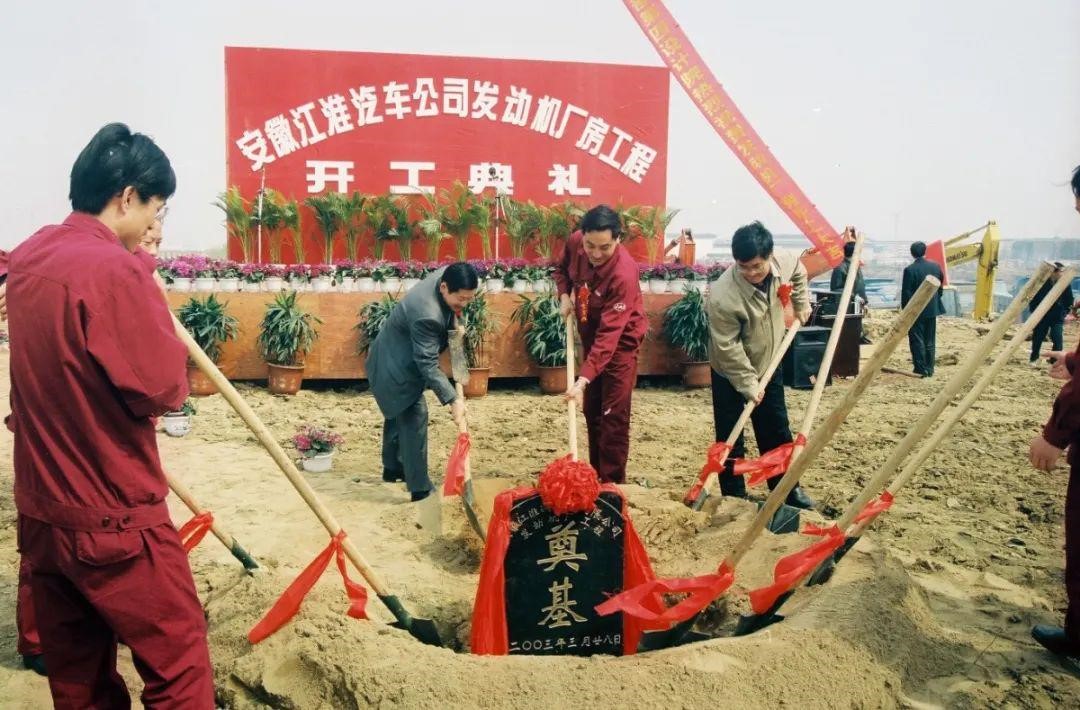
Ground-breaking ceremony for engine plant; photo credit: JAC Group
However, the transition from commercial to passenger vehicles brought challenges. The former chairman of JAC Group, Mr. Zuo Yan’an, repeatedly emphasized the necessity of entering the passenger vehicle market to avoid marginalization.
To prevent being sidelined, JAC Group made a significant push into the passenger vehicle market in the new millennium.
The RF MPV led JAC Group's entry into the passenger vehicle market, quickly becoming a popular model in the Chinese MPV market after adopting technology from Hyundai Motor.
Until 2010, the RF series MPVs performed steadily. However, as the Chinese MPV market's demand shifted towards higher quality, the mid-to-low-end RF series lost its competitiveness. Today, the best-performing model in the series, the RF M3, maintains monthly sales of around 1,000 units. The overall market position of JAC's MPVs has become marginalized. According to Gasgoo Auto Research Institute, in the first four months of 2024, JAC Group ranked 14th in MPV sales in China, with less than 7,000 units sold.
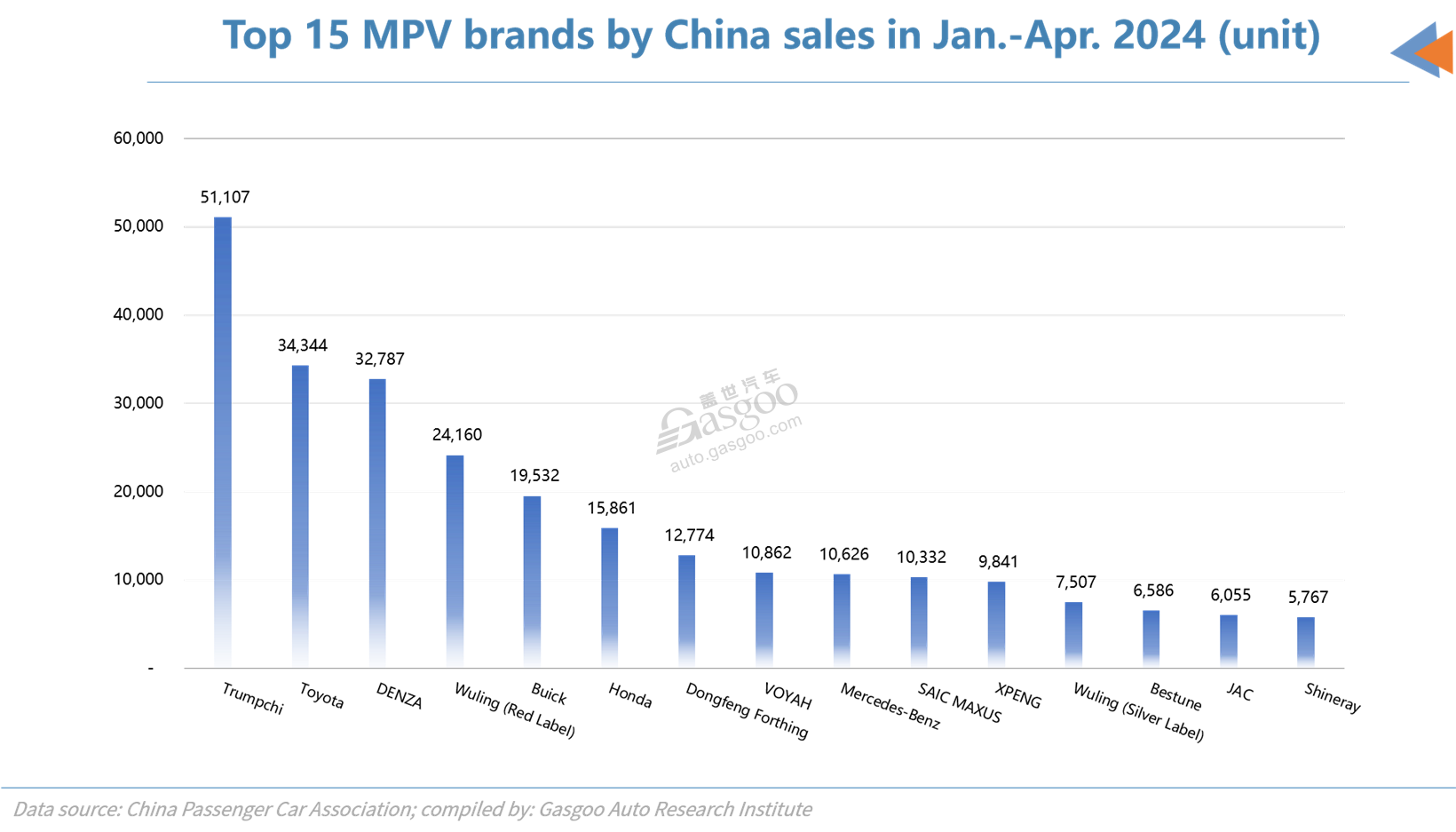
In the sedan market, JAC Group experienced a similar pattern of initial success followed by decline. Models like the Tongyue and Heyue started strong with their high cost-effectiveness. By 2014, JAC Group’s annual sedan sales had dropped to just over 50,000 units, down from over 100,000 units for the previous year. In 2015, the automaker’s annual sedan sales fell below 30,000 units.
Despite this, the prominent domestic SUV market provided a lifeline. JAC's small-sized SUV, the RF S3, quickly became popular, helping the company achieve a significant increase in passenger vehicle sales in 2015. That year, JAC's passenger vehicle sales reached 346,100 units, soaring 77% year on year. In 2016, the automaker’s passenger car sales nearly hit 370,000 units.
However, from 2017 onwards, JAC's SUVs, which lacked core competitiveness, saw a decline in popularity. By 2020, JAC's passenger vehicle sales had dropped to just over 100,000 units annually. In recent years, driven by the booming domestic new energy vehicle market and export markets, JAC Group's passenger vehicle sales have returned to a growth trajectory but still lag behind its 2016 peak.
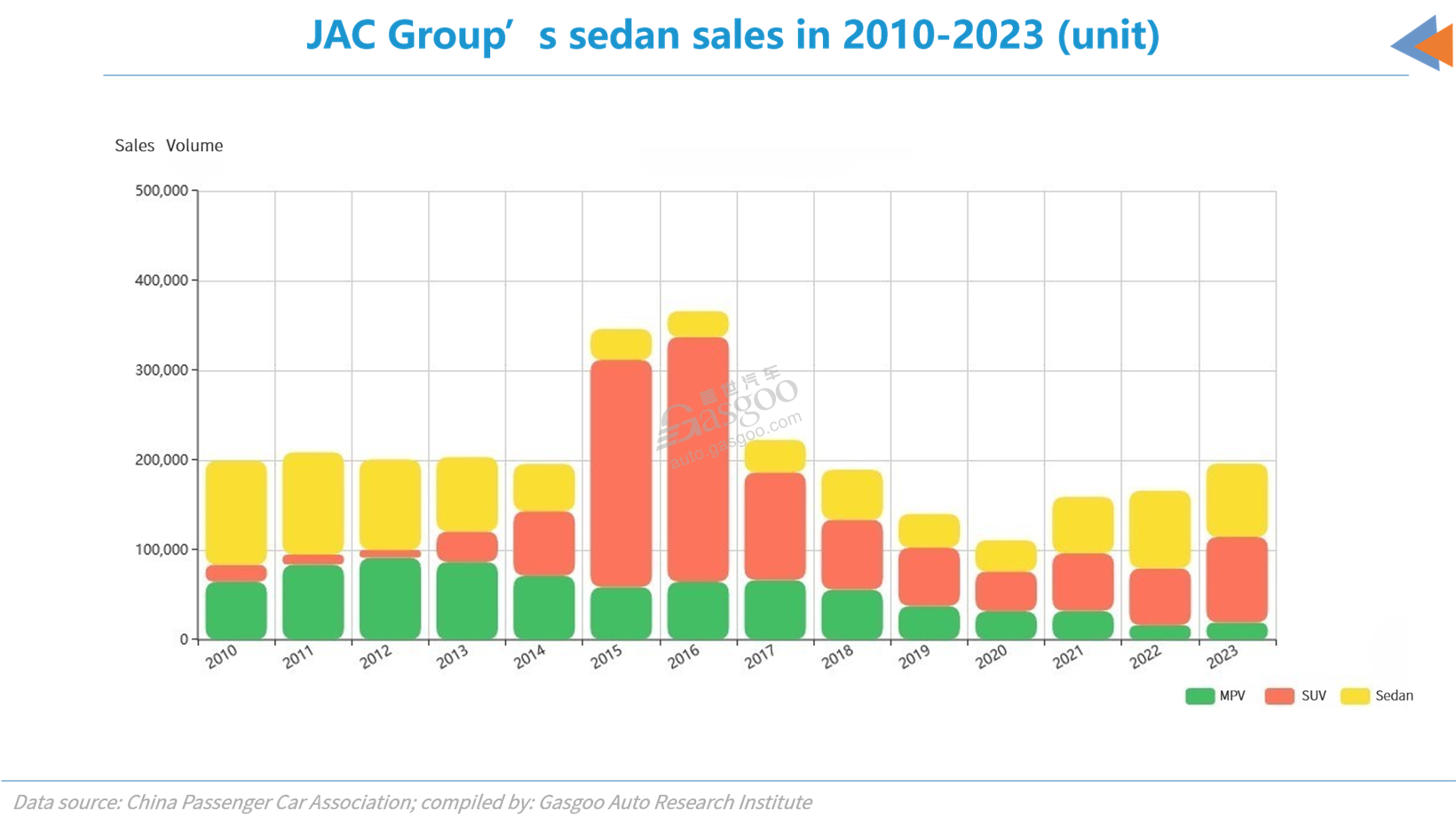
Early start, late gains: JAC Group's electrification journey
JAC Group ventured into the new energy vehicle (NEV) sector quite early. According to official information, JAC Group began exploring the NEV business in 2002, and started R&D of NEV models.
Ankai Bus, the subsidiary of JAC, introduced all-electric buses that have been showcased at major events and exhibitions both at home and abroad for over a decade. In 2011, Ankai's market share for all-electric buses exceeded 80%.
Upon fully entering the passenger vehicle market, JAC was quick to adopt a dual strategy of integrating both gasoline and electric power. In 2009, JAC launched its first generation of NEV products: an electric sedan based on the Tongyue platform. In 2010, the Heyue hybrid electric model made a high-profile debut at the Auto China in Beijing, and the Tongyue electric sedan was showcased at the Auto Guangzhou the same year. In early 2011, JAC Gorup delivered its first batch of all-electric sedans, becoming one of the key players in China promoting NEVs to consumers.
Mr. Dai Maofang, who was the vice president of Anhui Jianghuai Automobile Co., Ltd. and general manager of the passenger vehicle division at the time, once stated in an interview: “In the application of new energy vehicle technology in sedans, JAC adopts a two-pronged approach. The Tongyue platform develops pure electric sedans, while the Heyue platform develops hybrid sedans, which will gradually be expanded to all models.”
Despite significant challenges in promoting NEVs due to market consumption environment, infrastructure, and technology limitations, the substantial subsidies for NEVs at that time provided strong incentives. Early entrants like JAC Group benefited considerably from these policies.
Although JAC Group's first-generation NEVs were essentially gasoline-to-electric conversions with short range limitations, they garnered significant attention and gradually achieved economies of scale. The second generation of new energy passenger cars featured electric vehicle-dedicated chassis, longer range, and enhanced market competitiveness. By 2019, JAC Group’s cumulative NEV sales had surpassed 100,000 units.
The year 2023 marked a milestone for JAC Group in the NEV field. It launched a fresh new energy passenger car brand, Yiwei, introducing a new logo and unveiling the EV 3, the first model based on the DI pure electric platform. Prior to this, JAC Group announced the establishment of Yiwei Automotive Technology Co., Ltd. The new company is set to pursue market-oriented financing and explore mixed-ownership reforms, driving the development of JAC's new energy passenger car business. Over the next five years, Yiwei Technology aims to achieve a market scale of 300,000 to 500,000 vehicles, becoming a core force in JAC's NEV operations.
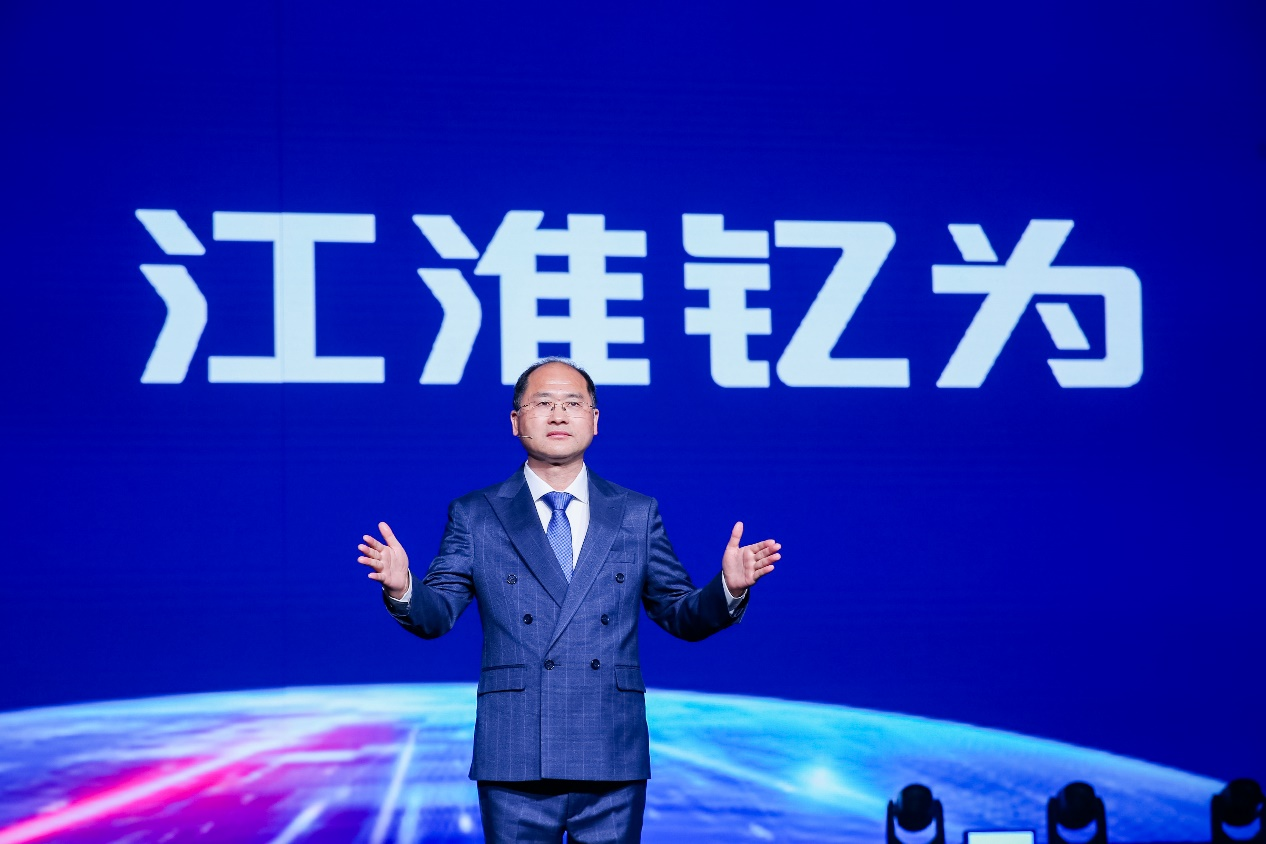
Yiwei brand launch; photo credit: JAC Group
In addition to accelerating electrification in passenger vehicles, JAC Group is also speeding up its electrification efforts in commercial vehicles.
In 2023, JAC Group sold over 8,000 new energy light-duty trucks, a fourfold increase year-on-year. Additionally, JAC Group's new energy heavy-duty trucks have completed a full layout of three major technology routes: battery electric, hybrid, and hydrogen fuel cell.
Despite JAC Group's early foray into the NEV business, its net profit excluding non-recurring gains and losses has not turned positive since 2016. In terms of net profit attributable to shareholders of the listed company, JAC Group posted a loss of 1.58 billion RMB in 2022. While the situation improved in 2023, the net profit attributable to shareholders was still only 152 million RMB.






